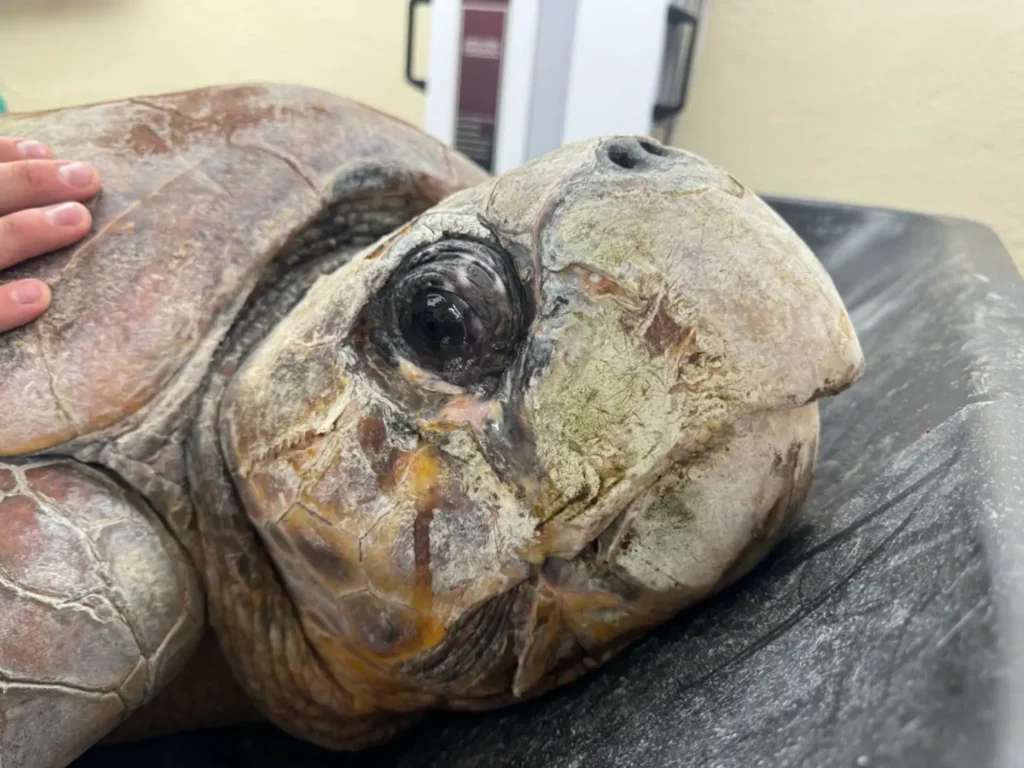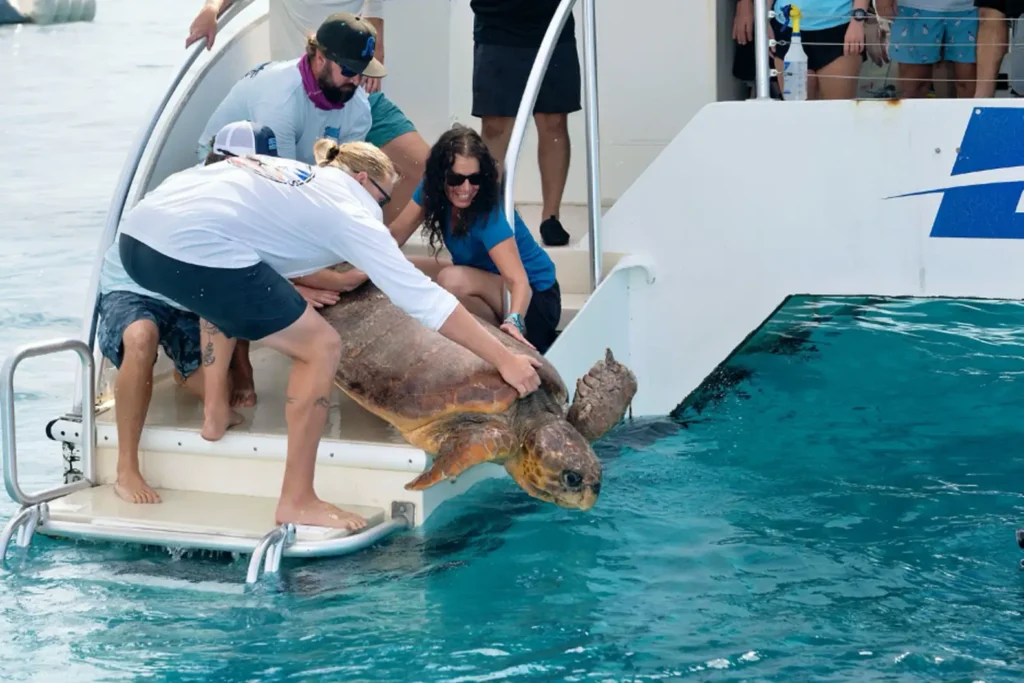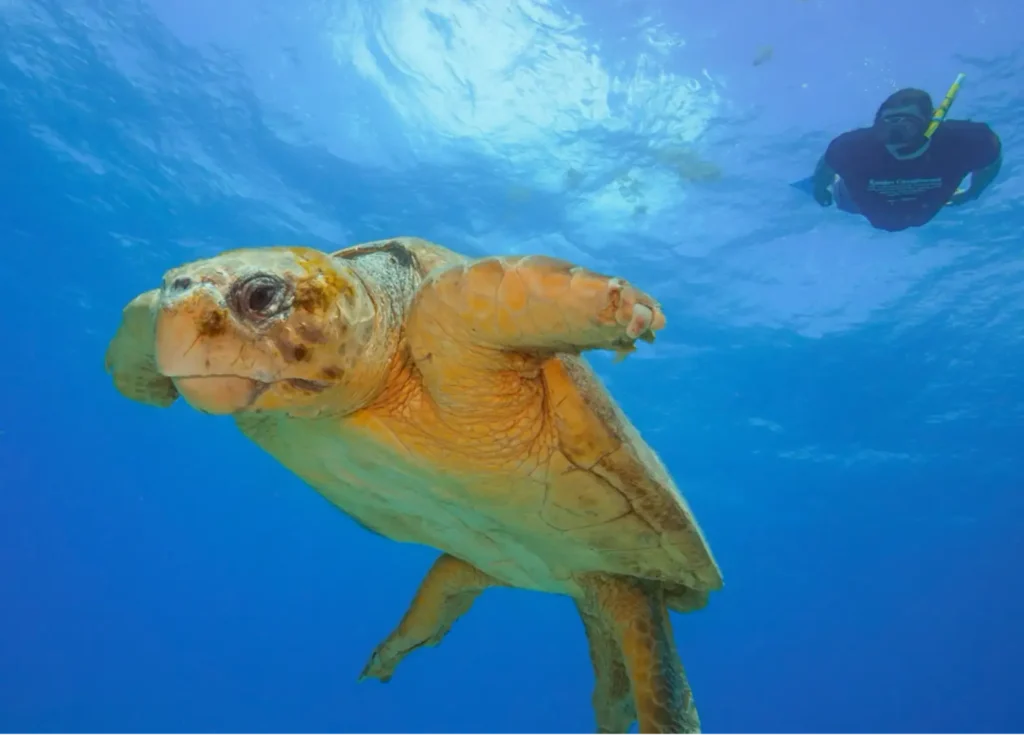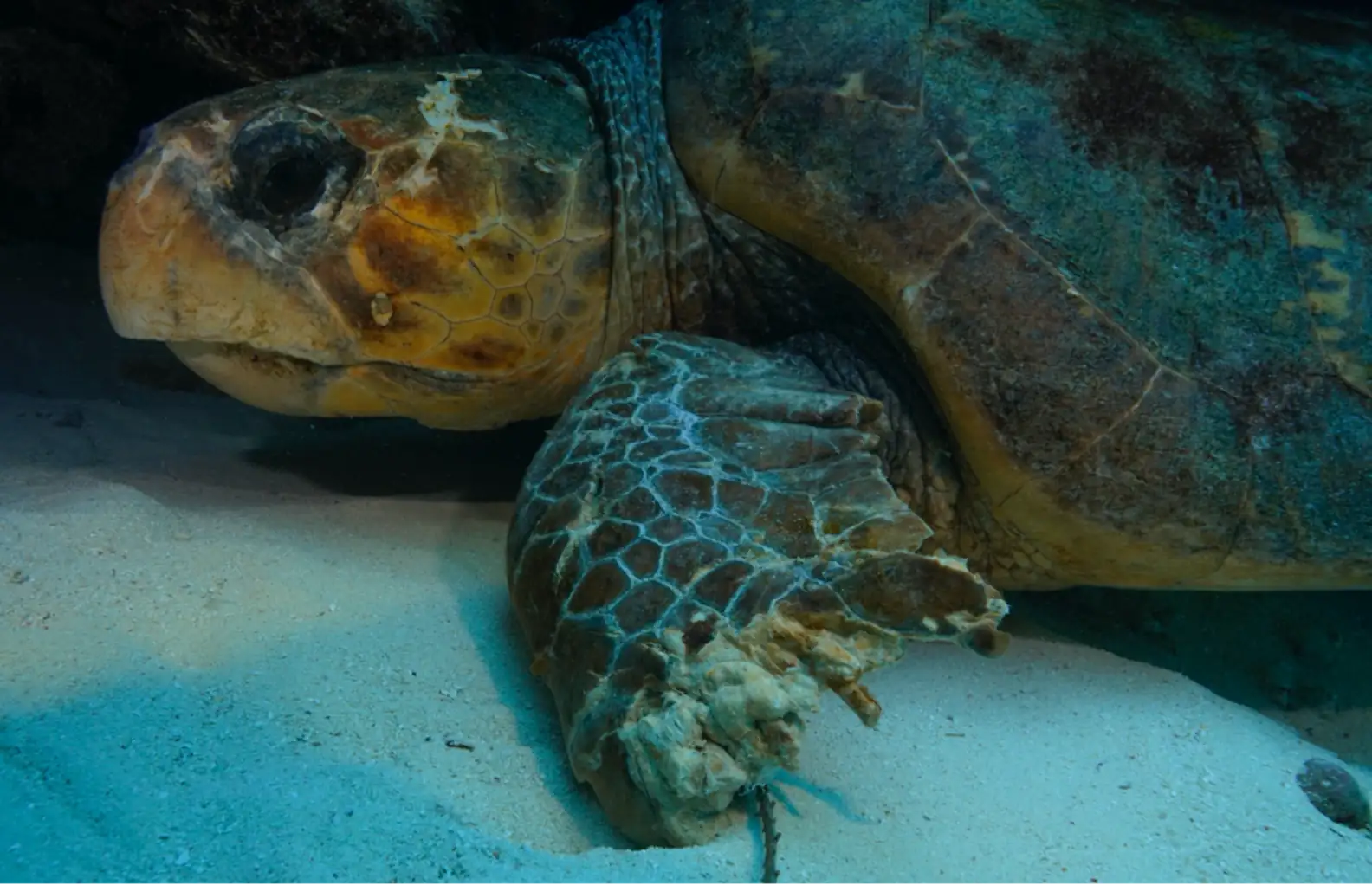When Mike Papish, an experienced diver and underwater photographer, first spotted Lenny, a massive 322-pound loggerhead sea turtle, he immediately sensed something was wrong. Lenny wasn’t using one of his front flippers — it was partially missing — and deep wounds marred his head. “It was definitely a shark attack,” Papish later told The Dodo, his voice heavy with concern.

But rescuing a wild turtle the size of a grand piano was no small task. Papish teamed up with a crew of divers from Sundance Watersports to carefully lift the injured giant onto their boat. Yet the real challenge was just beginning. “Once we got him fully on board, the struggle wasn’t over,” Papish recalled. “We had to barricade him with three huge ice chests filled with ice to keep him calm, but Lenny just swatted them aside like they were nothing. It took all four of us sitting on those ice chests, barricading around him, just to get him safely back to shore.”

On land, Lenny was rushed to The Turtle Hospital in Marathon, Florida, where he was given expert care — from fluids and antibiotics to wound treatment and even laser therapy. The moment Lenny arrived was nothing short of spectacular. “He’s the largest loggerhead I’ve ever seen,” said Bette Zirkelbach, the hospital’s manager, who has cared for thousands of sea turtles over her 13 years there. Since its founding in 1984, this nonprofit has rescued and rehabilitated over 3,000 sea turtles, each with its own story of survival.
After just two weeks of dedicated care, Lenny was ready to return home. “Timing was critical,” Zirkelbach explained. “It was mating season in the Florida Keys, and as an endangered species, every mature loggerhead like Lenny plays a vital role in the ecosystem.” Estimated to be between 60 and 70 years old, Lenny was of prime reproductive age.

Papish elaborated on the importance of sea turtles: “They’re like nature’s gardeners, grazing on seagrass much like cows do on land. Without them, the seagrass grows wild and chokes the coral reefs, damaging the entire underwater ecosystem.”
In late March, Lenny made a triumphant splash back into the waters where he was first found. “Watching him swim away healthy was the best feeling ever,” Zirkelbach shared, her eyes shining with joy.
Since his release, Papish has encountered Lenny several times, most recently in early June. “Each time, he’s stronger,” Papish said. “His injured flipper is gaining strength, his swimming more confident. When he surfaces for air, it’s smooth and effortless—nothing like when we released him.”
Papish affectionately describes Lenny as curious and playful. “Whenever I see him, he swims a lap right under the boat, almost like he’s showing off for the snorkelers, before heading back into the deep blue.”
